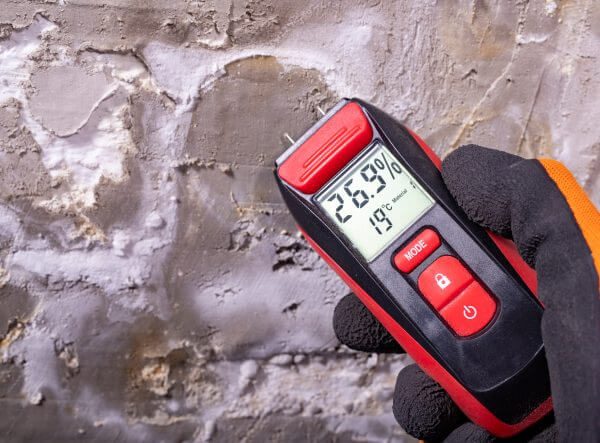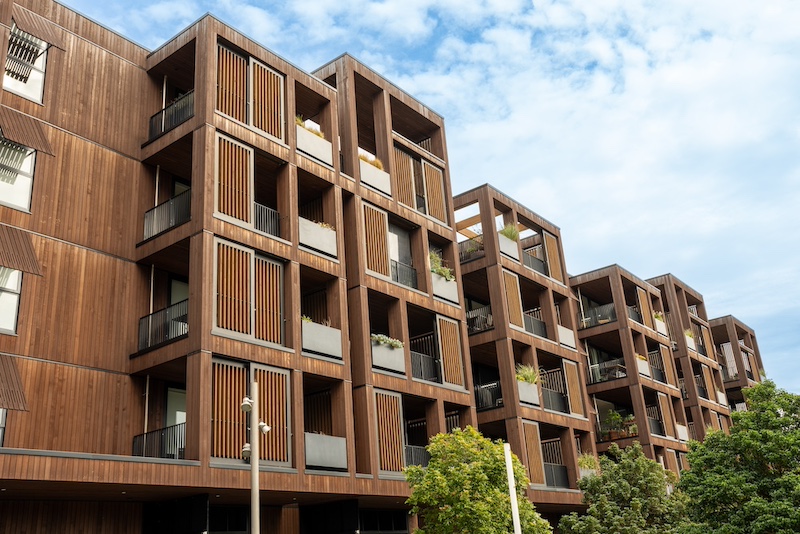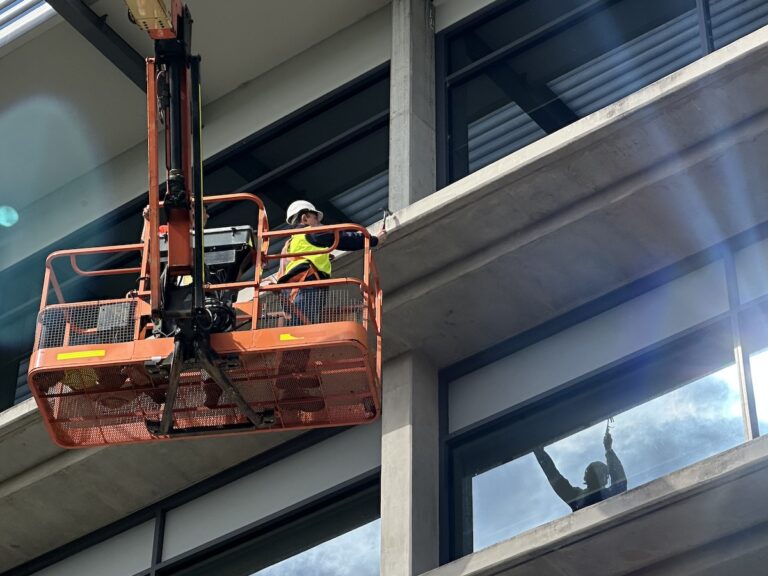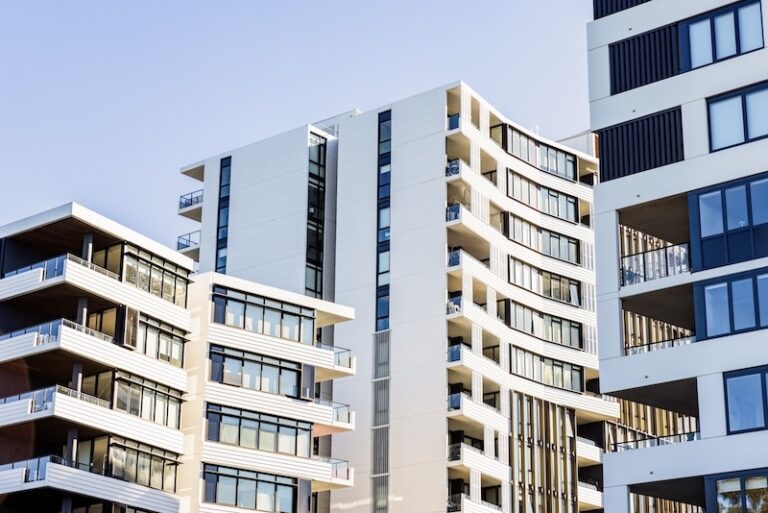Maintaining a building’s structural integrity is essential for ensuring the safety of its occupants and preserving its value. However, building issues can arise over time, resulting in significant problems if not addressed. That’s why it’s crucial to identify building issues before they become significant problems. Remedial diagnostic investigations play a crucial role in identifying and addressing building issues. At MJ Engineering Projects, we provide comprehensive diagnostic testing to ensure your building remains in top condition.

Remedial diagnostic investigations are an essential aspect of building maintenance and repair. These investigations are designed to identify and assess building issues before they become significant problems. A remedial diagnostic investigation aims to determine the root cause of a building issue and develop a tailored solution to address the issue.
Remedial diagnostic investigations can identify various issues, including water ingress, structural damage, and building defects. These investigations can involve various methods, including visual inspections, non-destructive testing, and laboratory testing. The diagnostic process typically involves a comprehensive inspection of the building, including its exterior and interior, as well as its systems and components.
During a remedial diagnostic investigation, engineers will assess the building’s condition and identify any issues that require attention. They will then develop a remedial plan to address these issues, including repairs, maintenance, or replacement of building components or systems.
Conducting a remedial diagnostic investigation involves a team of experienced professionals trained to identify and assess building issues accurately. These professionals use the latest technology and equipment to conduct their investigations, ensuring that all issues are identified and addressed.
The goal of remedial diagnostic investigations is to ensure the longevity and value of the building. By identifying and addressing building issues early on, building owners can prevent significant problems from developing and extend the lifespan of the building.
With over 18 years of industry experience, MJ Engineering Projects delivers tailored diagnostic investigations to identify the root cause of building issues. Our consultants use advanced techniques and proven methodologies to provide clear, reliable findings and practical solutions.
We follow a structured process to ensure accuracy and transparency. It begins with a detailed site inspection and report, supported by diagnostic testing where required. From there, we develop specifications that outline methodologies, materials and compliance requirements in line with Australian Standards and NCC obligations. Our team then manages the tender process to engage qualified contractors and oversee the works through to completion. With rigorous quality assurance and clear communication at each stage, we ensure long-lasting, compliant and cost-effective outcomes.
Our remedial consultants will conduct a thorough site inspection, utilising advanced diagnostic tools to assess the extent of damages and identify underlying issues.
They will inspect the areas where defects are reported including areas adjacent/below and provide initial findings in a detailed report, offering clear insights and preliminary recommendations for remediation tailored to the structure's specific needs.

Remedial diagnostic investigations are essential for identifying the root causes of building defects, ensuring effective and lasting solutions. Engaging a specialist is critical to accurately assess issues such as structural deterioration, waterproofing failures, or façade damage. Specialists use advanced diagnostic tools and expertise to develop tailored strategies, avoiding generic or temporary fixes that can escalate costs over time. By understanding the underlying problems, they recommend cost-effective, long-term solutions that address both current issues and future risks. A professional approach ensures the building’s safety, compliance, and durability, protecting the property’s value and minimising unnecessary repair expenses.

For commercial properties, remedial diagnostic investigations are essential to identify and address issues that could compromise safety, compliance and asset value. At MJ Engineering Projects, our team provides comprehensive assessments to uncover structural defects, façade deterioration, water ingress and other complex problems. All investigations are carried out in line with Australian Standards and NCC obligations.
We then provide tailored recommendations that balance technical performance, cost-effectiveness and compliance requirements. Our role includes coordinating stakeholders, reviewing tender submissions and ensuring contractors adhere to the agreed scope of works. With a focus on risk management and long-term performance, we deliver solutions that minimise disruption and protect the ongoing value of commercial assets.
For residential buildings, timely diagnostic investigations help maintain safety, protect property values and resolve issues before they escalate. MJ Engineering Projects works with owners’ corporations, strata managers and individual property owners to identify underlying building defects, including water ingress, spalling, structural cracking and non-compliant construction.
Our specialists provide clear, evidence-based reports that outline the cause of issues, recommended remediation strategies and compliance obligations under Australian Standards and the NCC. Acting as superintendent, we liaise with all parties involved to ensure remedial works are implemented correctly, cost-effectively and with minimal disruption to residents. This approach gives property owners confidence that their buildings are safe, durable and compliant.


With more than eighteen years of proven experience in remedial engineering, our firm has built a strong reputation for delivering reliable and long-lasting results. As registered design practitioners, we specialise in repairing building defects across a wide range of projects, from heritage façades that require delicate restoration to modern high-rise towers that demand technical precision.
Our structured project management approach, combined with thorough quality control processes, ensures every repair is handled with efficiency and care. We focus on minimising disruption, controlling costs and tailoring repair strategies to meet the unique requirements of each client.
This commitment to detail and excellence enables us to consistently provide durable, value-driven solutions that stand the test of time.

Our engineers bring extensive expertise in remedial engineering, supported by years of specialised experience and a detailed understanding of industry standards. We take pride in delivering tailored remediation strategies that address both visible and hidden defects across a wide range of building types.
By staying informed of changing regulations and compliance requirements, our team ensures every project achieves technical excellence and long-term durability. We also place a strong emphasis on sustainability, applying environmentally responsible practices and innovative methods wherever possible.
From diagnosing complex issues to implementing cost-effective repair programs, we are committed to providing clients with outcomes that are reliable, compliant and built for the future.

We have successfully completed inspections and remedial work on more than one thousand residential, commercial and industrial buildings across Sydney. This extensive experience allows us to identify and resolve issues with accuracy, from water ingress and façade deterioration to concrete spalling and structural concerns.
Each project benefits from a customised repair strategy designed to achieve durability, compliance and lasting performance. Our large and diverse portfolio equips us to anticipate challenges, optimise resources and streamline delivery to minimise site disruption.
With this proven track record, we are confident in managing projects of any scale or complexity, delivering solutions that are efficient, cost-effective and built to endure.
Don’t let defects undermine the safety and value of your property. Take proactive steps today by choosing MJ Engineering for comprehensive waterproofing services by our industry-leading remedial consultants in Australia.
With over 18 years of industry-leading experience and a track record of inspecting and protecting over 1,000 buildings in Sydney, we offer unmatched expertise and reliable solutions tailored to your specific needs. If you have any questions, contact our team, who will be happy to assist.
Client: Owners Corporation
Remedial works at Milsons Point have stopped persistent water ingress, repaired concrete damage and delivered a modern balcony enclosure that satisfies the Design and...
Client: Owners Corporation
MJ Engineering Projects served as superintendent and adviser on remedial works for an eight-storey, fifty-unit apartment building in Wollstonecraft. The concrete-frame, brick-infill structure suffered...
Client: Owners Corporation
MJ Engineering Projects supervised remedial works on a concrete-frame, brick-infill building in Pymble. The structure, supported by four principal columns and standing three floors...
MJ Engineering Projects conducts window and door rectification to ensure functionality, water tightness and compliance with BCA.
MJ Engineering Projects conducts waterproofing repairs to find and rectify the sources of water penetration into the building.
MJ Engineering Projects conducts a tender process with several specialised remedial contractors to ensure the best fit for the job.
MJ Engineering Projects provides an in-depth specification to ensure remedial rectification works are completed in a methodical manner.
MJ Engineering Projects acts on behalf of the client for all Remedial Building Services to ensure the contractor completes a smooth rectification process.
MJ Engineering Projects conducts an inspection of your assets and provides a maintenance regime plan to optimise cost savings.
MJ Engineering Projects conducts floor topping investigations and repairs to prevent and rectify corrosion to the internal concrete slab.
MJ Engineering Projects conduct inspection reports that highlight building defects and recommend rectification methods.
MJ Engineering Projects conducts facade rejuvenation to ensure optimal performance and appearance of the building.
MJ Engineering Projects specialises in delivering thorough and litigation-compliant expert witness reports for construction claims, tailored for building dispute resolution cases.
MJ Engineering Projects provides expert design practitioner services, specialising in regulated designs and technical specifications for Class 2, 3, and 9c buildings.
MJ Engineering Projects conducts concrete corrosion repair as part of its Remedial Building Services to return the structure to its sound and safe state.
MJ Engineering Projects conducts rectification of existing cladding that is both unsafe and non-compliant with the BCA.
MJ Engineering Projects conducts ballustrade rectification to ensure compliance to the BCA and safety to the public and building occupants.
MJ Engineering Projects specialises in expert balcony repairs, ensuring safety, compliance, and long-lasting solutions tailored to your property needs.
Key Concerns and Frequently Asked Questions About Building Diagnostic Investigation Services in Australia
Everything you need to know about MJ Engineering Projects. Can’t find the answer you’re looking for?
Chat With Our Team Now.
Remedial diagnostic investigations are essential to building maintenance and repair, as they can help identify common building issues that, if left untreated, can lead to significant problems. These investigations can help identify various issues, including water ingress, structural damage, and building defects.
Water ingress is one of the most common issues identified through remedial diagnostic investigations. It occurs when water enters a building through gaps, cracks, or other openings in the building envelope. Water ingress can lead to mould growth, rot, and decay of building materials, which can weaken the structure of the building and create safety hazards for occupants.
Structural damage is another issue that can be identified through remedial diagnostic investigations. Structural damage can occur due to various reasons, such as age, weathering, or improper construction. It can result in cracks, bulges, and other visible signs of damage, which can compromise the safety and stability of the building.
Building defects can also be identified through remedial diagnostic investigations. These defects can range from minor issues, such as cosmetic blemishes, to major issues, such as faulty construction or design. Building defects can affect the building’s safety, function, and value.
These common building issues can lead to significant problems if left untreated. For instance, water ingress can lead to mould growth, creating health hazards for occupants. Structural damage can weaken the building’s structure, making it unsafe for occupancy. Building defects can reduce the building’s value and create safety hazards for occupants.
Therefore, it is crucial to conduct remedial diagnostic investigations to identify and address these issues promptly. Building owners should consider engaging the services of a professional remedial engineer to conduct these investigations to ensure that all issues are identified and addressed effectively.
When identifying and addressing building issues, working with a reputable provider of remedial diagnostic investigation services is crucial. At MJ Engineering Projects, we are committed to delivering cost-effective and practical solutions that meet each client’s unique needs. Here’s how we stand out from other service providers:
Experience and Expertise: Our team of experienced professionals has extensive experience in conducting remedial diagnostic investigations. We have a proven track record of successfully identifying and addressing building issues promptly and effectively.
At MJ Engineering Projects, we utilise a comprehensive diagnostic process to identify the root cause of building issues. Our team of experts thoroughly inspect the building to identify any issues that require attention. We use the latest technology and equipment to provide accurate and reliable diagnoses, ensuring that we address the root cause of the problem rather than just the symptoms.
Tailored Solutions: We understand that every building is unique and take a tailored approach to remedial diagnostic investigations. We work closely with our clients to develop custom solutions that meet their specific needs. Our team provides ongoing support and guidance throughout the implementation of remedial diagnostic investigation solutions, ensuring their success.
We use the latest technology and equipment in conducting remedial diagnostic investigations. This allows us to provide accurate and reliable diagnoses and identify building issues quickly and effectively.
Cost-effective and Practical Solutions: We are committed to delivering cost-effective and practical solutions for remedial diagnostic investigations. Our team of experts provides tailored solutions that meet each client’s unique needs, ensuring that they get the most value for their investment.
At MJ Engineering Projects, we have conducted numerous successful remedial diagnostic investigations, resulting in improved longevity and value of the building. Our comprehensive diagnostic process and tailored solutions have helped our clients identify and address building issues promptly and effectively, preventing further damage and reducing repair costs.
Identifying and addressing building issues through remedial diagnostic investigations is essential for building maintenance and repair. Engaging MJ Engineering Projects for these services can provide numerous benefits, including their experience and expertise in identifying and addressing building issues, using the latest technology and equipment, and finding cost-effective and practical solutions. Their approach to remedial diagnostic investigations includes a comprehensive diagnostic process and tailored solutions to meet each client’s specific needs. By providing ongoing support and guidance throughout the implementation of solutions, MJ Engineering Projects ensures the success of their client’s projects. Don’t hesitate to contact MJ Engineering Projects to learn more about their remedial diagnostic investigation services and how they can help improve the longevity and value of your building.